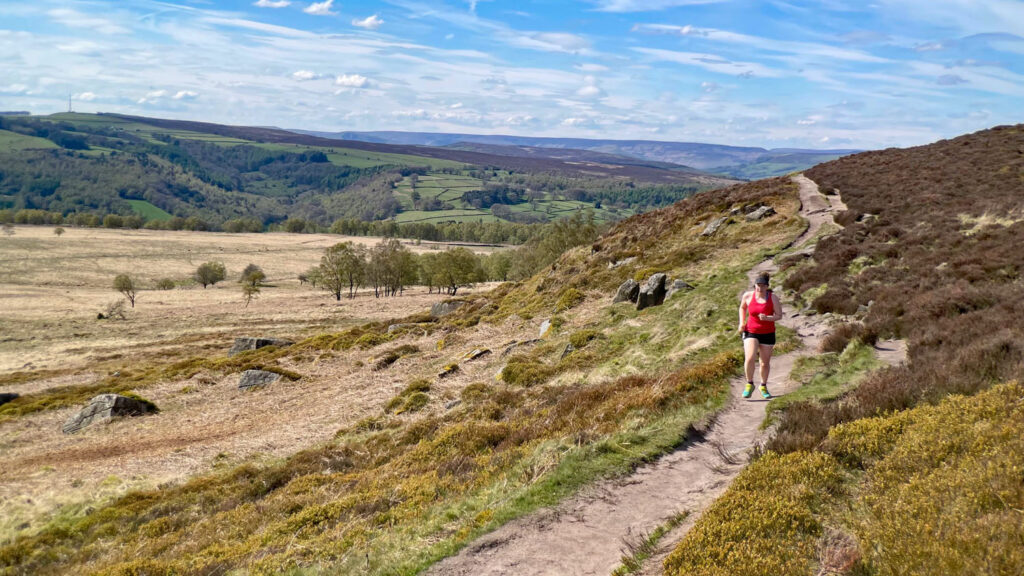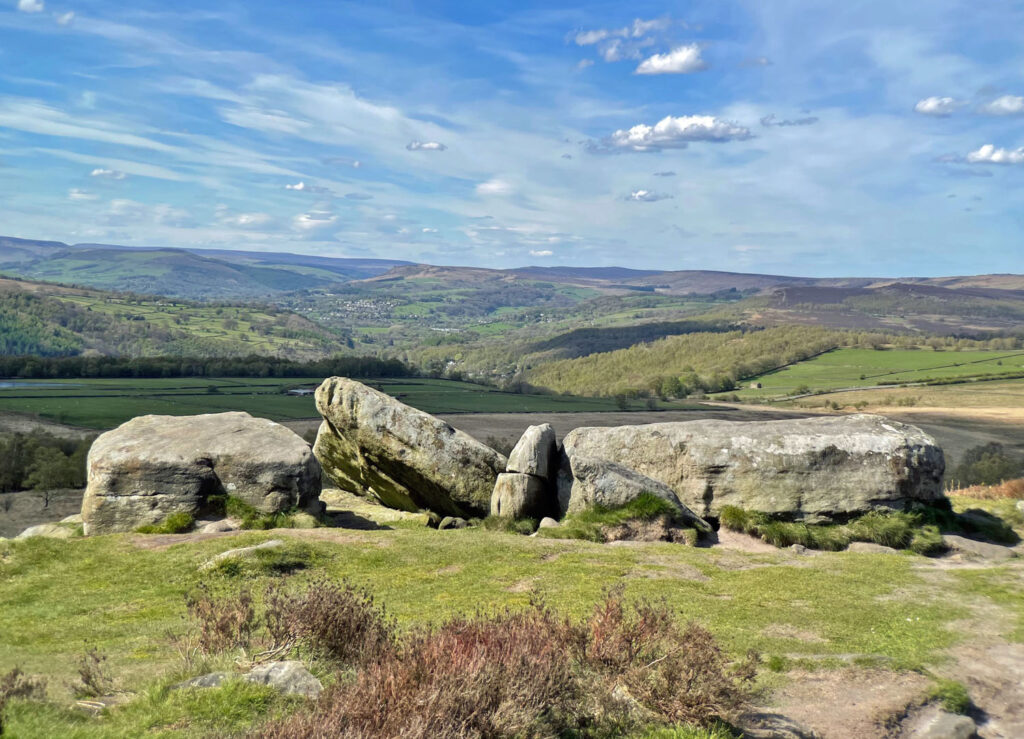
The Dark White Edge – Peak Perfection
A ‘peak’ is a pointed mountain top, so whoever bestowed the name Peak District upon the upland terrain at the southern rise of the Pennines was a little over enthusiastic, for the majority of the higher hills there are not peaks at all, but moorland giants. Nevertheless, there are peaks in this widely varied national park, albeit relatively diminutive ones, found primarily amidst the limestone country. However, you will not find any on this outing, which in fact only loosely includes a hill top and yet fully deserves its Worthy status, by delivering an uplifting stroll (in spirit, not acclivity) through a strikingly definitive Peak District experience.

This walk across White, Froggatt and Curbar Edges in Derbyshire is a fine standalone route, although a number of similar circuits could have been chosen to represent the essential character of the gritstone edge and moorland combinations. It’s just that this particular perambulation is my personal favourite.
The high point of the walk reaches 1,200 feet (366m) affording the impression that some form of workout is to be expected, however, the car park stands barely 150 feet below that and the total ascent during the walk is only around 800 feet over six miles, so the going is as easy as any ‘Worthy’ could be. It is also entirely irrelevant, as this is a stroll to be savoured solely for its distillation of the magic of the moorlands, regardless of any effort involved.
The map can be zoomed in or out to change the scale
In essence, this exploration serves as a sample of the eastern moorlands, centred on Big Moor, which is encircled by high level roads, although they are sufficiently distant not to distract. The impression of wilderness exists, although it is a sanitised version, nonetheless, the perception of quiet, open space has an unexpected bonus in attracting wild red deer to inhabit the moor.

For most of us, with our hearts in the Highlands, the sight of red deer brings an emotive charge to the senses. The deer in the Peak District are not indigenous, but escapees from controlled herds on parkland estates. Those on Big Moor have sneaked out the gates of Chatsworth and proliferated. It is estimated that there are now upwards of two hundred deer in this specific area and culling has become necessary to arrest the increase of a species that has no natural predator. The chances of spotting deer are high at any time of year and if you are blessed to be present on a still autumn morning, the guttural roar of stags in rut resound with impassioned expressions of authority.

Commencing from the car park above Curbar Gap, the moorland ridge is easily gained and the inherent altitude, allied to the expansive aspect, affords splendid views into the diversity of landscape within the national park. Looking east with cultural contrast, you may even spot the odd tower block in nearby Sheffield. This underlines the original importance of the Peak District as a weekend escape for urban dwellers and the consequent need to sensitively manage the environment under the pressures of public footfall. This task is locally undertaken by the Eastern Moors Partnership, being a joint venture between the National Trust and the RSPB, who work closely with the National Park Authority and Sheffield City Council. You can contemplate the ecological balance whilst tramping through a combination of heather and acid grasslands, or you can simply absorb the precious solitude within sight of England’s fourth largest city.

The path keeps close to the subtle escarpment, which presents grassy slopes with isolated boulders rather than the precipitous gritstone crags that characterise the later stage of the walk. As the barrier of a drystone wall is reached, turn down the slope through amiable birch woodlands to the Grouse Inn, which marks the half way point. Another parking option for the walk is the adjacent Hay Wood, part of the Longshaw Estate. Formerly grouse shooting ground for the Duke of Rutland, the land was sold to Sheffield Corporation to fund death duties, but when development was threatened, it was bought by public appeal and presented to the National Trust in 1931.

Our return route involves traversing two of the famous gritstone climbing grounds of the Peak, Froggatt and Curbar Edge. The crags of Froggatt are relatively sheltered from prevailing winds and this is one reason why I recommend taking the more exposed White Edge to begin, thus hopefully keeping the wind behind on the more exposed outward route.


There are a number of points where the antics of rock climbers can be viewed by ringside spectators. Reputedly, Froggatt is second only in popularity to the much more extensive Stanage Edge, so there is usually plenty of activity, although this also adds to pressure on available parking places for those merely out for a walk.

The climbs on Froggatt are difficult enough, despite the friendly angle of many slabs, however, Curbar is where the more fearsome ascents are made. Having spent my university days at Sheffield, climbing was my main preoccupation and every visit to these crags invariably began with breakfast at the nearby Grindleford Station Café, an establishment that has been in the same family for over half a century. The staple menu for intending climbers in my day was a foot-long sausage in a giant bap accompanied by a pint of tea. It is a wonder that climbing standards ever improved during the 1970s!
The highly technical climbing on Curbar is complemented by the modern taste for ‘Bouldering’ where climbers push athletic limits on lower crags and oversized boulders. The sight of a climber approaching the rocks with a mattress strapped to their back as a crash mat is a frequent occurrence.

For the walker, the crest of the edge is a dramatic emplacement, with the plunging rockface providing a stupendous foreground to the scenic backdrop of the Derwent Valley. The temptation is to dally and, with the end of the route barely five minutes away, there is every excuse to take full advantage of this idyllic viewing station.

There is an option to extend the walk by a couple of more leisurely miles by crossing the Curbar Gap to Baslow Edge, the southern extension of the gritstone edges. It may not be as dramatic as Curbar but the views are equally rewarding and, as a bonus, include an aerial perspective of the Chatsworth Estate. A fine short circuit can be made encompassing the edge, the monument dedicated to the Duke of Wellington and a huge, solitary sculpted boulder known as the Eagle Stone.

For route directions see here:
Worthy Rating: 68.5
Aesthetic – 19.5
Complexity – 12
Views – 16
Route Satisfaction – 14
Special Qualities – 7